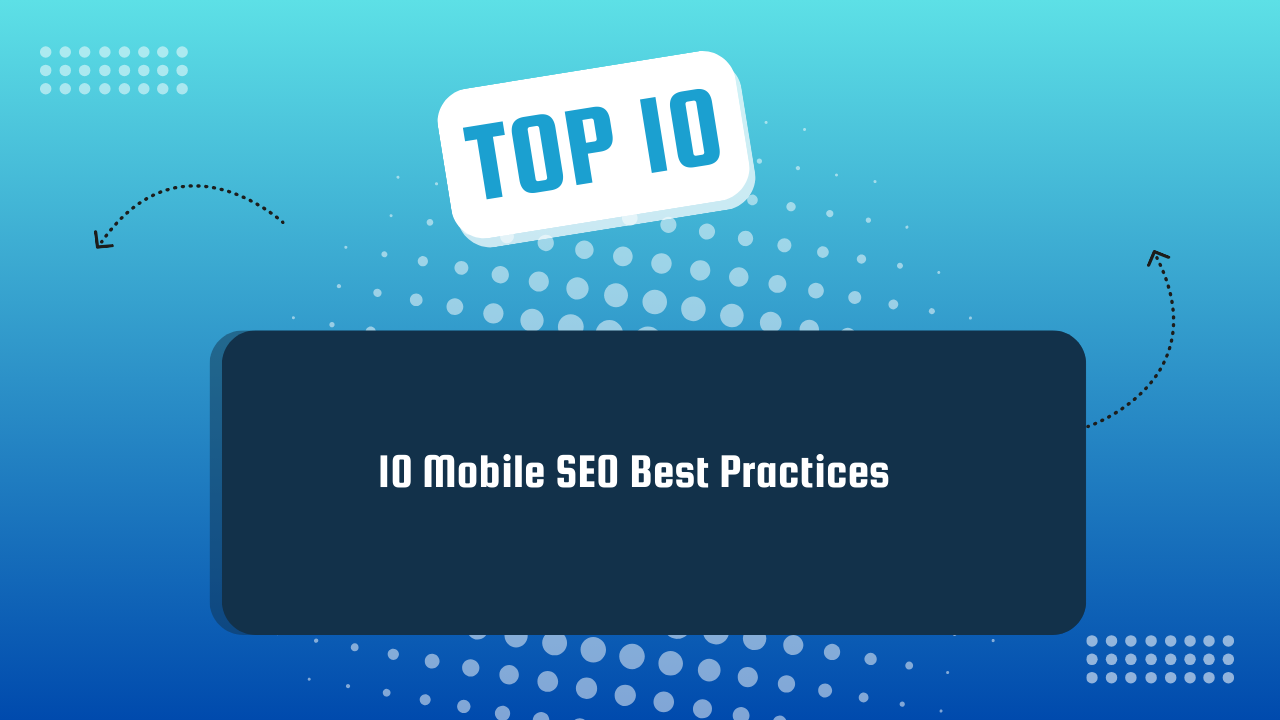In today's digital landscape, the way people access and consume information has undergone a significant transformation. With the widespread adoption of smartphones and other mobile devices, mobile traffic has surpassed desktop traffic, making it crucial for businesses to optimize their websites for mobile users. In response to this shift, Google has implemented a mobile-first indexing strategy, prioritizing the indexing and ranking of mobile-friendly websites over their desktop counterparts. This article explores the importance of mobile SEO, the challenges it presents, and effective strategies to optimize your website for better mobile visibility and search engine rankings.
1. Understanding Mobile-First Indexing
Mobile-first indexing is a fundamental change in how Google crawls, indexes, and ranks websites. Traditionally, Google's algorithms prioritized the desktop version of websites for indexing and ranking purposes. However, with the increasing dominance of mobile traffic, Google has shifted its focus to mobile-friendly websites, using the mobile version of a site's content as the primary source for indexing and ranking.
This change means that if your website is not optimized for mobile devices, it may suffer in search rankings, visibility, and overall user experience. Google's goal is to provide users with the best possible experience, and mobile-friendly websites are now a crucial part of that equation.
2. The Importance of Mobile SEO
Mobile SEO has become an essential aspect of overall search engine optimization. Here are some key reasons why mobile SEO should be a top priority for businesses:
a. Mobile Traffic Dominance: As mentioned earlier, mobile traffic has surpassed desktop traffic globally. Failing to optimize your website for mobile users means missing out on a significant portion of your potential audience and customer base.
b. User Experience: Mobile devices have unique constraints, such as smaller screen sizes, touch-based navigation, and varying connection speeds. A website that is not optimized for mobile can lead to a frustrating user experience, resulting in higher bounce rates and lower conversion rates.
c. Improved Search Rankings: With Google's mobile-first indexing approach, websites that are optimized for mobile devices have a better chance of achieving higher search rankings and increased visibility.
d. Brand Perception: A well-designed and mobile-friendly website can enhance brand perception and credibility, as users expect a seamless experience across all devices.
e. Competitive Advantage: By focusing on mobile SEO, businesses can gain a competitive edge over their rivals who have not yet optimized their websites for mobile devices.
READ ALSO:
3. Challenges in Mobile SEO
While the benefits of mobile SEO are clear, implementing an effective mobile strategy can be challenging. Here are some common challenges businesses face:
a. Technical Constraints: Mobile devices have limitations in terms of processing power, screen size, and bandwidth, which can impact website performance and user experience.
b. Responsive Design Implementation: Implementing responsive web design, which adapts a website's layout and content to different screen sizes, can be complex and require significant development resources.
c. Content Optimization: Optimizing content for mobile devices involves considering factors such as shorter attention spans, easier readability, and prioritizing the most important information.
d. Mobile-Specific Ranking Factors: Google considers various mobile-specific ranking factors, such as page speed, mobile-friendliness, and mobile usability, which require careful attention and optimization.
e. Testing and Monitoring: Testing and monitoring the performance of your website across different mobile devices, operating systems, and network conditions is crucial for maintaining a consistent user experience and identifying areas for improvement.
4. Mobile SEO Strategies
To overcome these challenges and achieve success in mobile SEO, businesses should implement the following strategies:
a. Responsive Web Design (RWD): Responsive web design is the foundation of mobile SEO. It ensures that your website adapts its layout and content to fit different screen sizes and devices, providing a consistent and user-friendly experience across all platforms.
b. Accelerated Mobile Pages (AMP): AMP is an open-source initiative that enables the creation of lightweight, fast-loading web pages specifically designed for mobile devices. Implementing AMP can significantly improve page load times and user engagement, leading to better search rankings and visibility.
c. Mobile-Friendly Content: Optimize your content for mobile users by focusing on concise, scannable, and easily digestible information. Use clear headings, bullet points, and shorter paragraphs to improve readability on smaller screens.
d. Optimize Images and Media: Large, unoptimized images and media files can significantly impact page load times on mobile devices. Compress images, use appropriate file formats (e.g., WebP), and leverage lazy loading techniques to improve performance.
e. Focus on Page Speed: Page speed is a critical ranking factor for mobile SEO. Optimize your website's code, leverage browser caching, minify CSS and JavaScript files, and implement other performance optimization techniques to reduce page load times.
f. Prioritize Mobile Usability: Ensure that your website's design and navigation are optimized for mobile devices. Use large, clickable buttons and links, simplify forms, and minimize the need for pinching and zooming, which can enhance the overall mobile user experience.
g. Mobile-Friendly URLs and Metadata: Use descriptive and concise URLs that are easy to read on mobile devices. Optimize metadata, such as title tags and meta descriptions, to accurately represent your content and entice users to click through from search results.
h. Implement Mobile Sitemaps: Create dedicated mobile sitemaps to help search engines understand and index your website's mobile content more effectively.
i. Leverage Mobile Analytics: Use mobile-specific analytics tools to track user behavior, identify areas for improvement, and make data-driven decisions about your mobile optimization efforts.
j. Monitor and Test: Regularly monitor your website's performance on various mobile devices, operating systems, and network conditions. Conduct testing to identify and address any usability issues or compatibility problems.
5. Mobile SEO Best Practices
In addition to the strategies outlined above, there are several best practices that can help businesses achieve success in mobile SEO:
a. Implement Mobile-Friendly Pop-ups and Interstitials: Avoid intrusive pop-ups and interstitials that disrupt the user experience on mobile devices. If you must use them, ensure they are easily dismissible and do not obscure content.
b. Use Clickable Phone Numbers and Addresses: Make it easy for users to call your business or find your physical location by including clickable phone numbers and addresses on your mobile pages.
c. Leverage Structured Data and Schema Markup: Implement structured data and schema markup to help search engines better understand your content and provide enhanced search results, such as rich snippets and Knowledge Graph results.
d. Optimize for Voice Search: As voice-based assistants and search become more prevalent, optimize your content for natural language queries and conversational search patterns.
e. Prioritize Local SEO: For businesses with physical locations, focus on local SEO by optimizing for location-based searches, leveraging structured data for local listings, and ensuring consistency across online directories and citation sources.
f. Implement Progressive Web Apps (PWAs): PWAs combine the best of web and native mobile app experiences, offering features like offline functionality, push notifications, and seamless integration with mobile devices.
g. Stay Up-to-Date with Mobile SEO Trends and Updates: The mobile landscape is constantly evolving, with new technologies, devices, and search engine algorithms emerging regularly. Stay informed about the latest mobile SEO trends, best practices, and algorithm updates to ensure your optimization strategies remain effective.
READ ALSO:
6. Conclusion
In the age of mobile-first indexing, mobile SEO has become a critical component of overall search engine optimization efforts. By optimizing your website for mobile devices, you can improve user experience, increase visibility in search results, and stay competitive in a mobile-dominated digital landscape. Implementing responsive web design, optimizing content and images for mobile, prioritizing page speed, and focusing on mobile usability are just a few of the strategies that can help you achieve success in mobile SEO. Remember, mobile SEO is an ongoing process that requires continuous monitoring, testing, and adaptation to evolving trends and technologies. By embracing mobile optimization as a core part of your digital strategy, you can position your business for success in the mobile-first world.






